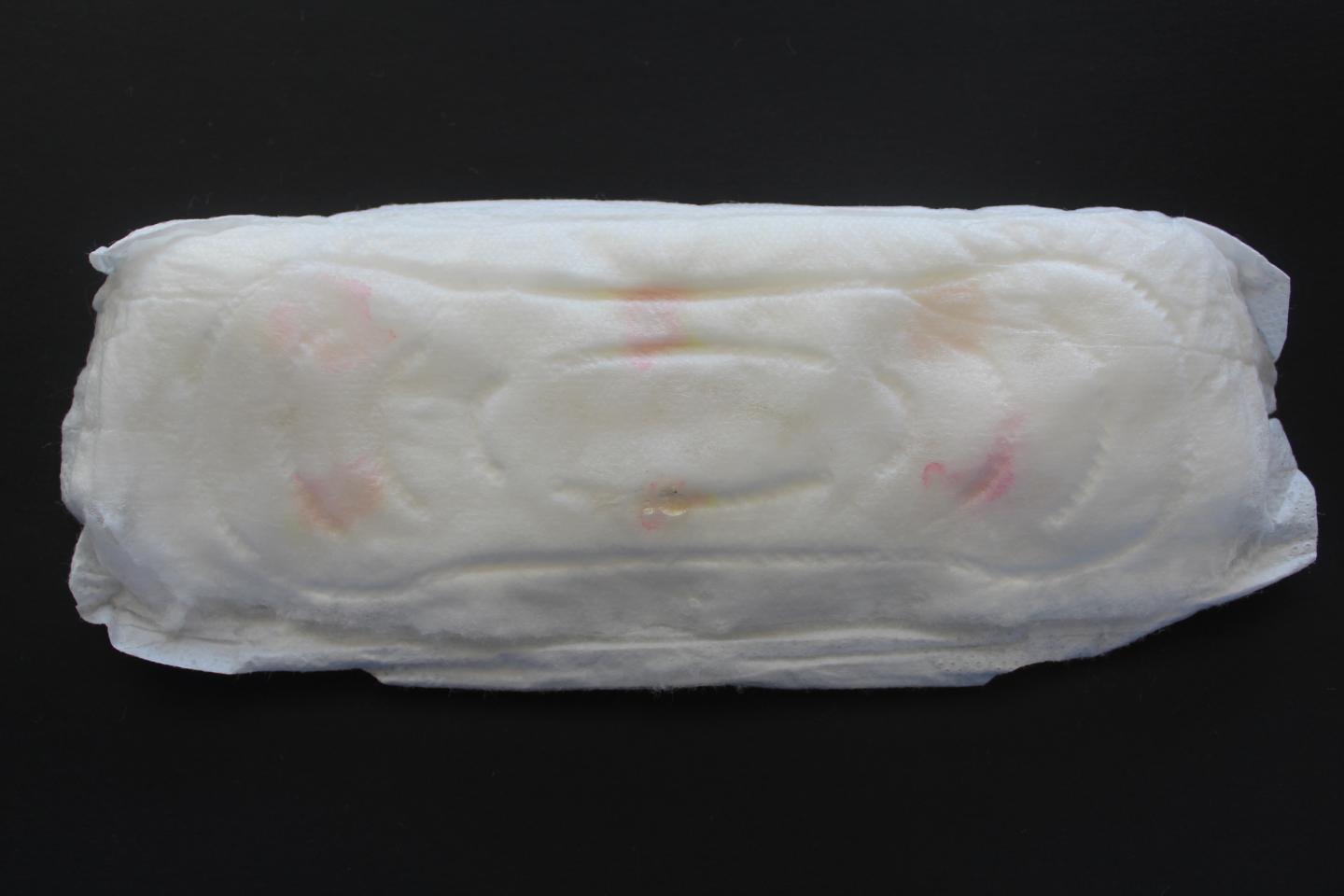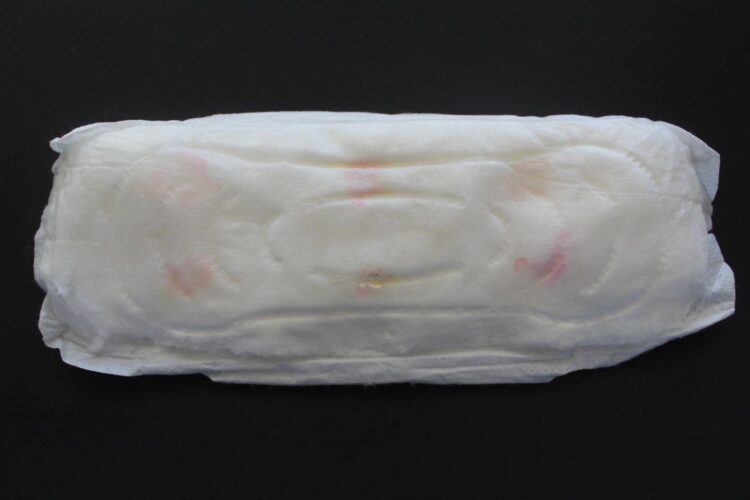
Credit: Adapted from ACS Omega 2021, DOI: 10.1021/acsomega.1c00806
The yeast Candida albicans can cause itchy, painful urinary tract and vaginal yeast infections. For women in low-resource settings who lack access to healthcare facilities, these infections create substantial social and economic burdens. Now, researchers reporting in ACS Omega have developed color-changing threads that turn bright pink in the presence of C. albicans. When embedded in tampons or sanitary napkins, they could allow women to quickly and discreetly self-diagnose vulvovaginal yeast infections, the researchers say.
According to the Mayo Clinic, about 75% of women will experience a yeast infection, or vulvovaginal candidiasis, at least once in their lifetime. Although women in high-resource areas can easily be diagnosed with a vaginal swab at their doctor’s office and then treated with an antifungal medication, many women throughout the world lack access to basic healthcare facilities. Moreover, in some resource-limited areas, societal taboos cause women to feel shame or embarrassment about the symptoms, which prevents them from seeking a doctor’s care. Therefore, Naresh Kumar Mani and colleagues wanted to develop an inexpensive method that could be integrated into menstrual hygiene products, allowing women to quickly, easily and discreetly self-diagnose yeast infections.
The researchers began with ordinary multifilament cotton threads purchased at a local craft store. To increase the wicking properties of the threads, the team treated them with a heptane solution that removed waxes and binders added during manufacturing. Then, the threads were coated with a molecule called L-proline β-naphthylamide (PRO) — the substrate for an enzyme secreted by C. albicans — and embedded in the inner layers of sanitary napkins and pads. When the researchers added simulated vaginal fluid spiked with C. albicans and an indicator solution, the spots of the napkins or pads containing yeast changed to a bright pink color. The detection time was only 10 minutes, compared with 24-72 hours for conventional tests. In addition, the new test costs only 22 to 28 cents per napkin or tampon, and it could easily be adapted to simultaneously detect other pathogens, such as bacteria that also can cause urinary tract infections, the researchers say.
###
The authors acknowledge funding from the Manipal Centre for Infectious Diseases, the Vision Group on Science and Technology of the Government of Karnataka, the Indian Council of Medical Research and the Science and Engineering Research Board, Department of Science and Technology, Government of India.
The paper is freely available as an ACS AuthorChoice article here.
The American Chemical Society (ACS) is a nonprofit organization chartered by the U.S. Congress. ACS’ mission is to advance the broader chemistry enterprise and its practitioners for the benefit of Earth and all its people. The Society is a global leader in promoting excellence in science education and providing access to chemistry-related information and research through its multiple research solutions, peer-reviewed journals, scientific conferences, eBooks and weekly news periodical Chemical & Engineering News. ACS journals are among the most cited, most trusted and most read within the scientific literature; however, ACS itself does not conduct chemical research. As a leader in scientific information solutions, its CAS division partners with global innovators to accelerate breakthroughs by curating, connecting and analyzing the world’s scientific knowledge. ACS’ main offices are in Washington, D.C., and Columbus, Ohio.
To automatically receive news releases from the American Chemical Society, contact [email protected].
Follow us: Twitter | Facebook
Media Contact
Katie Cottingham
[email protected]





